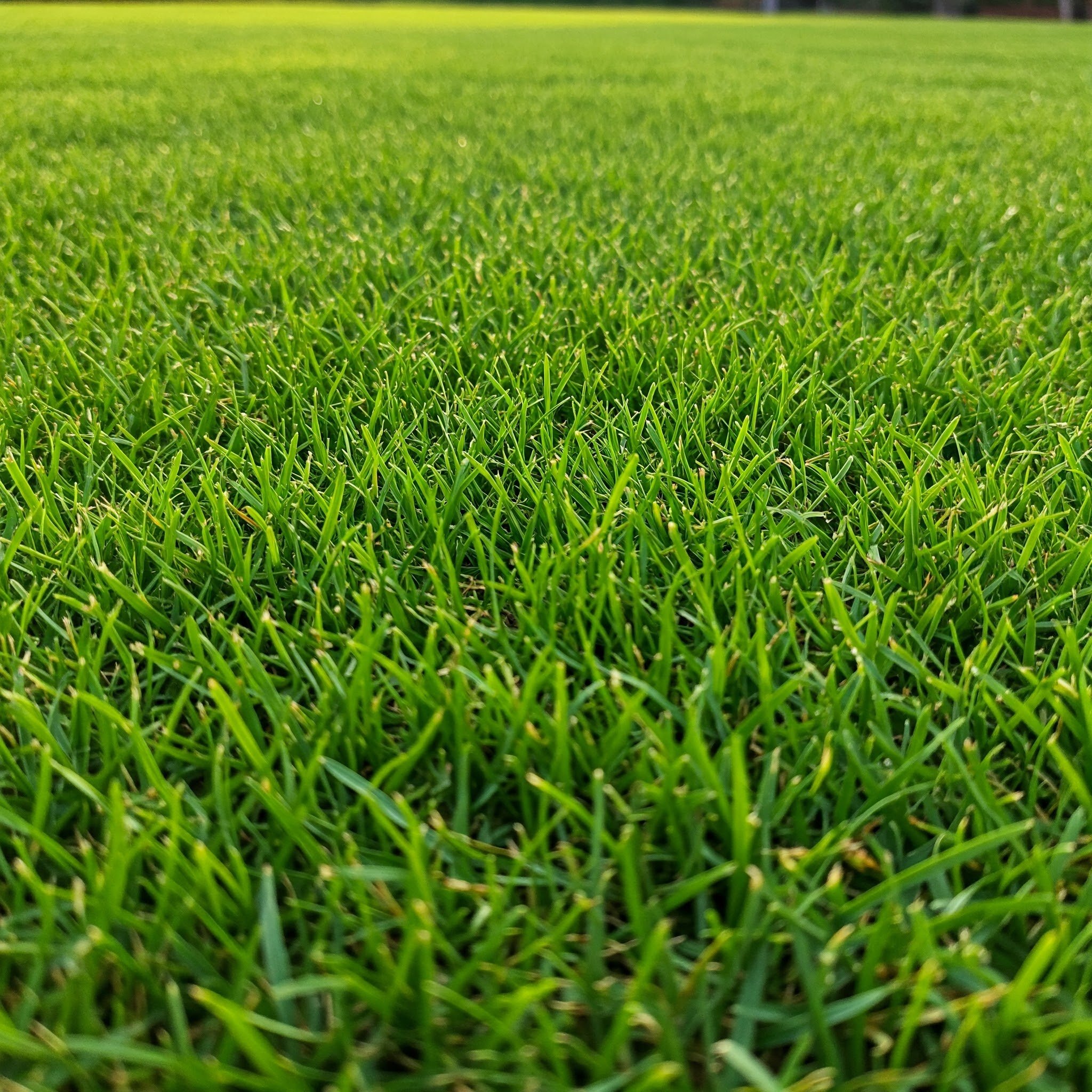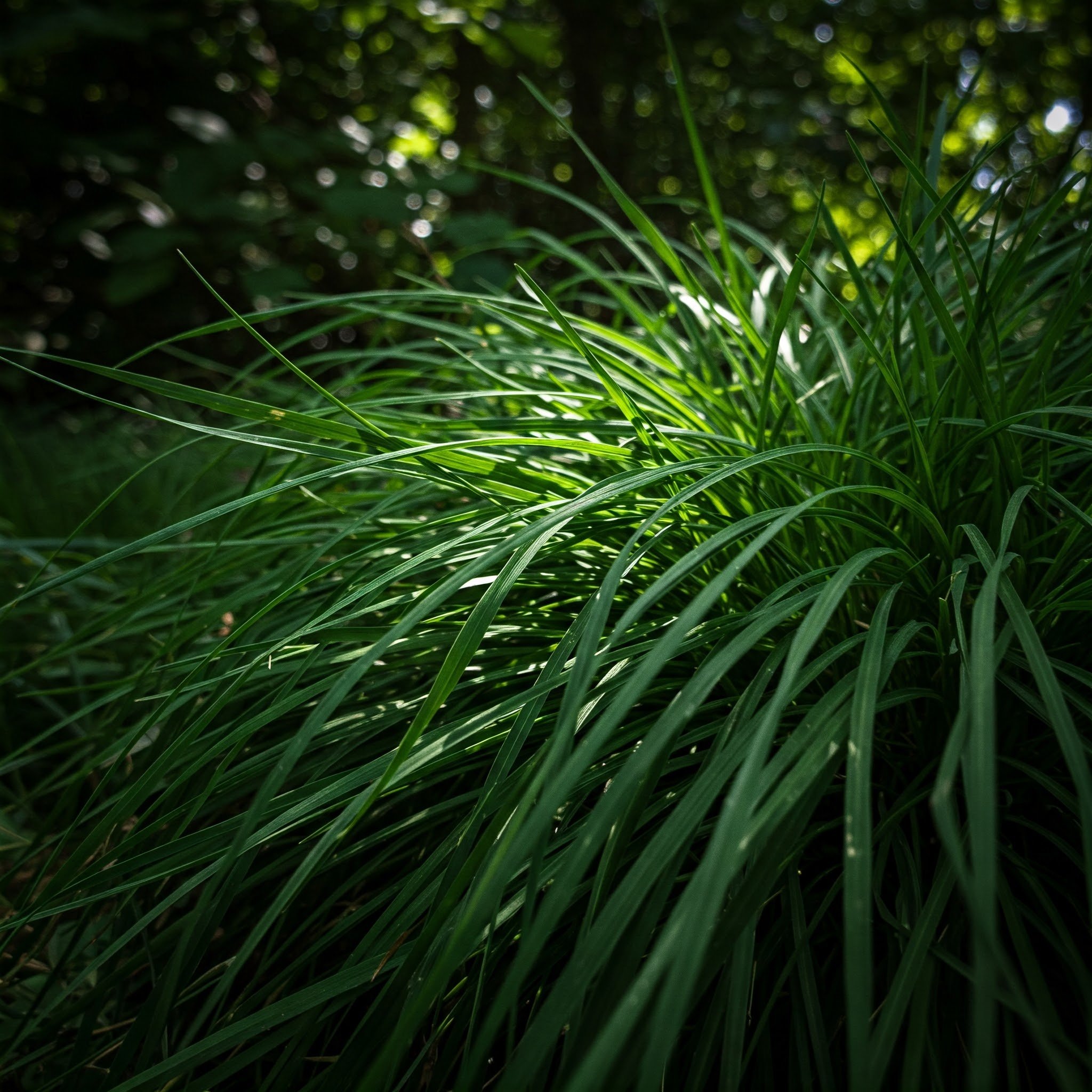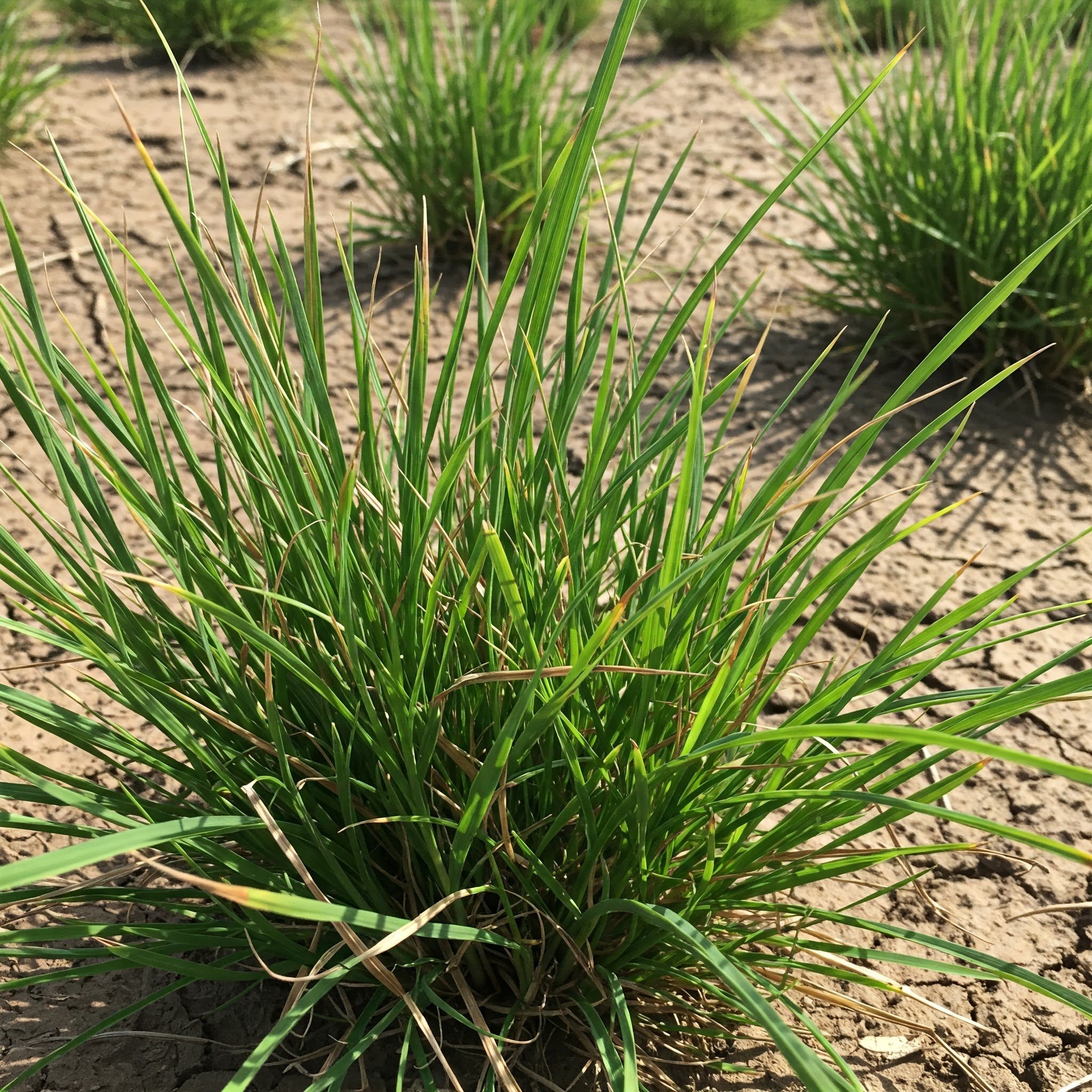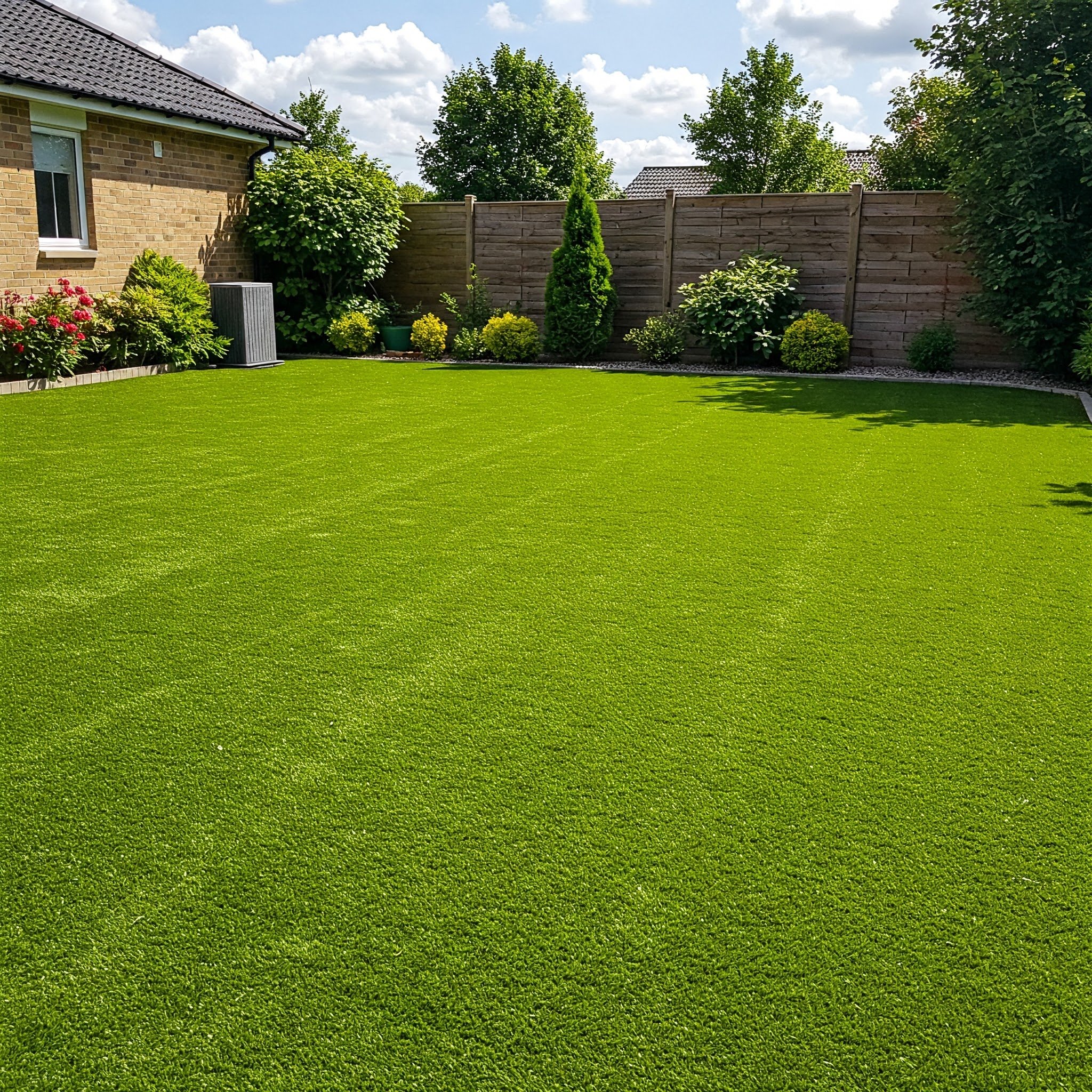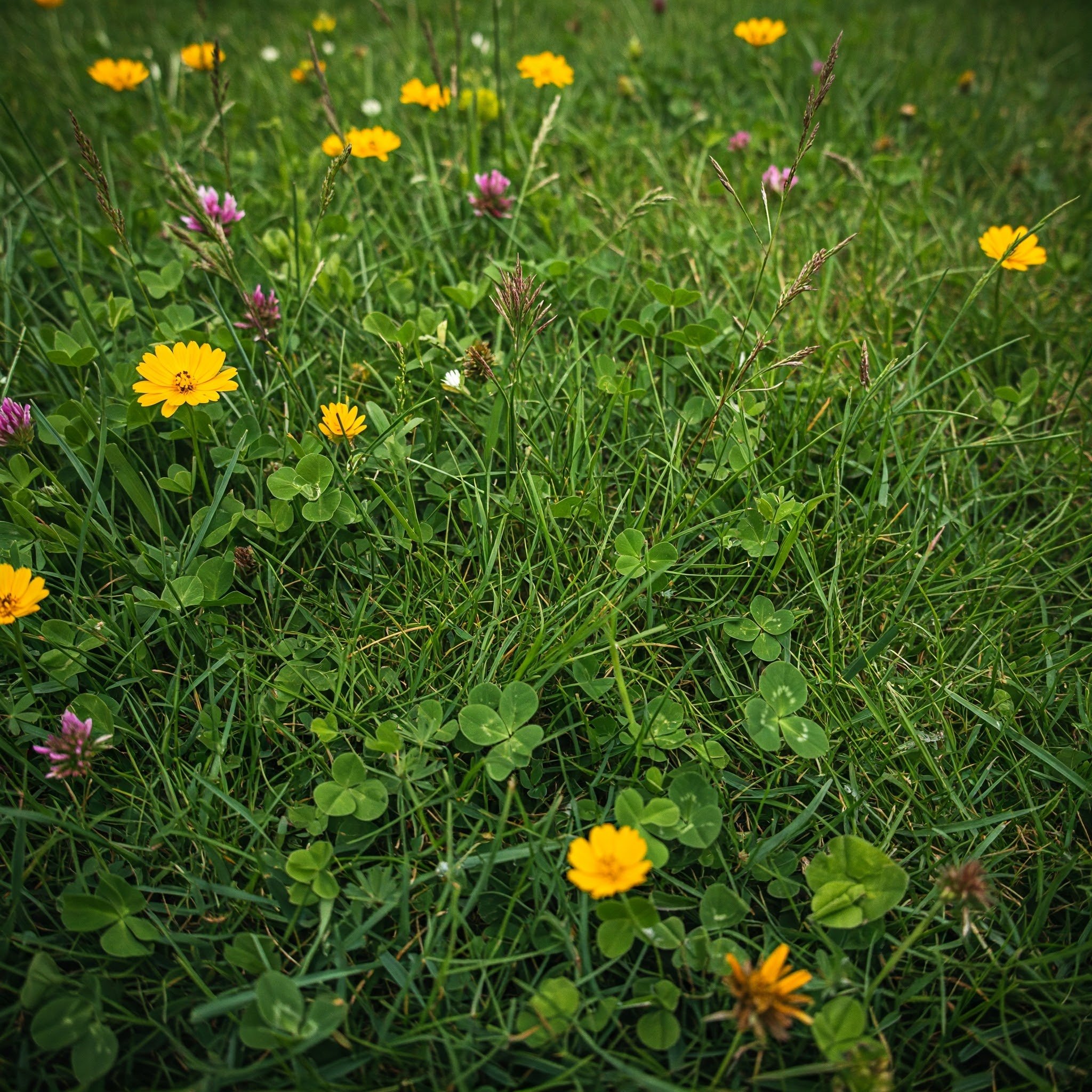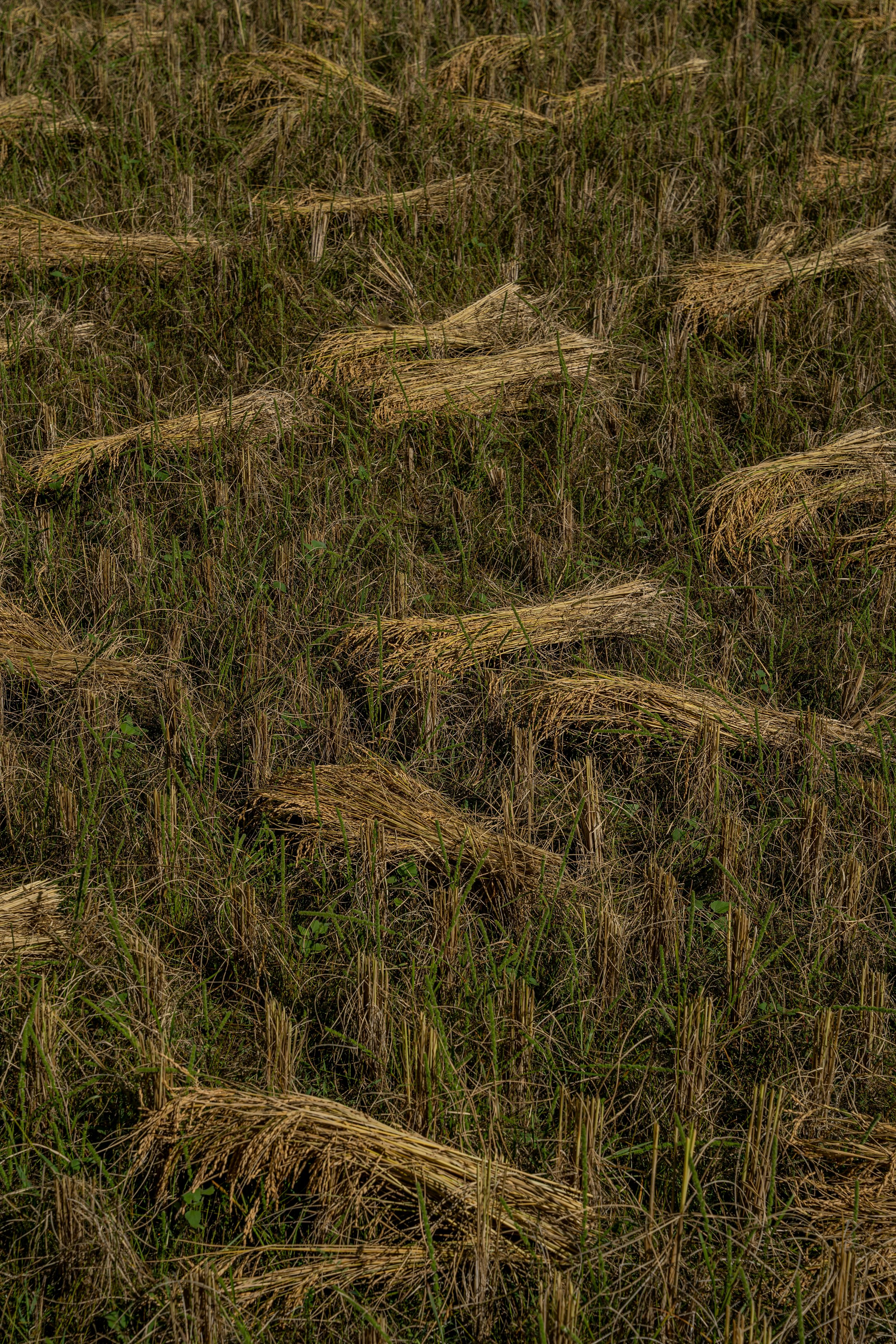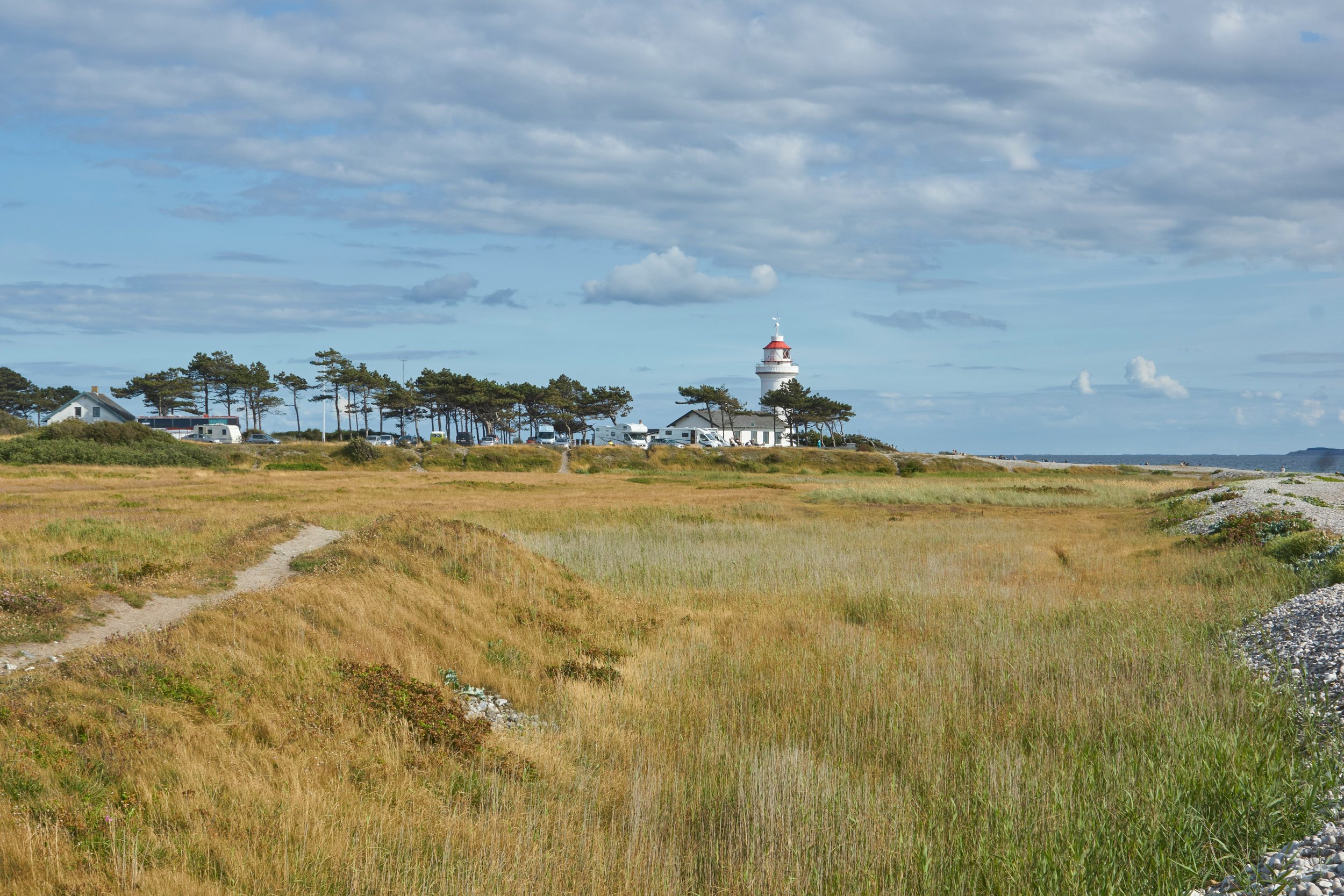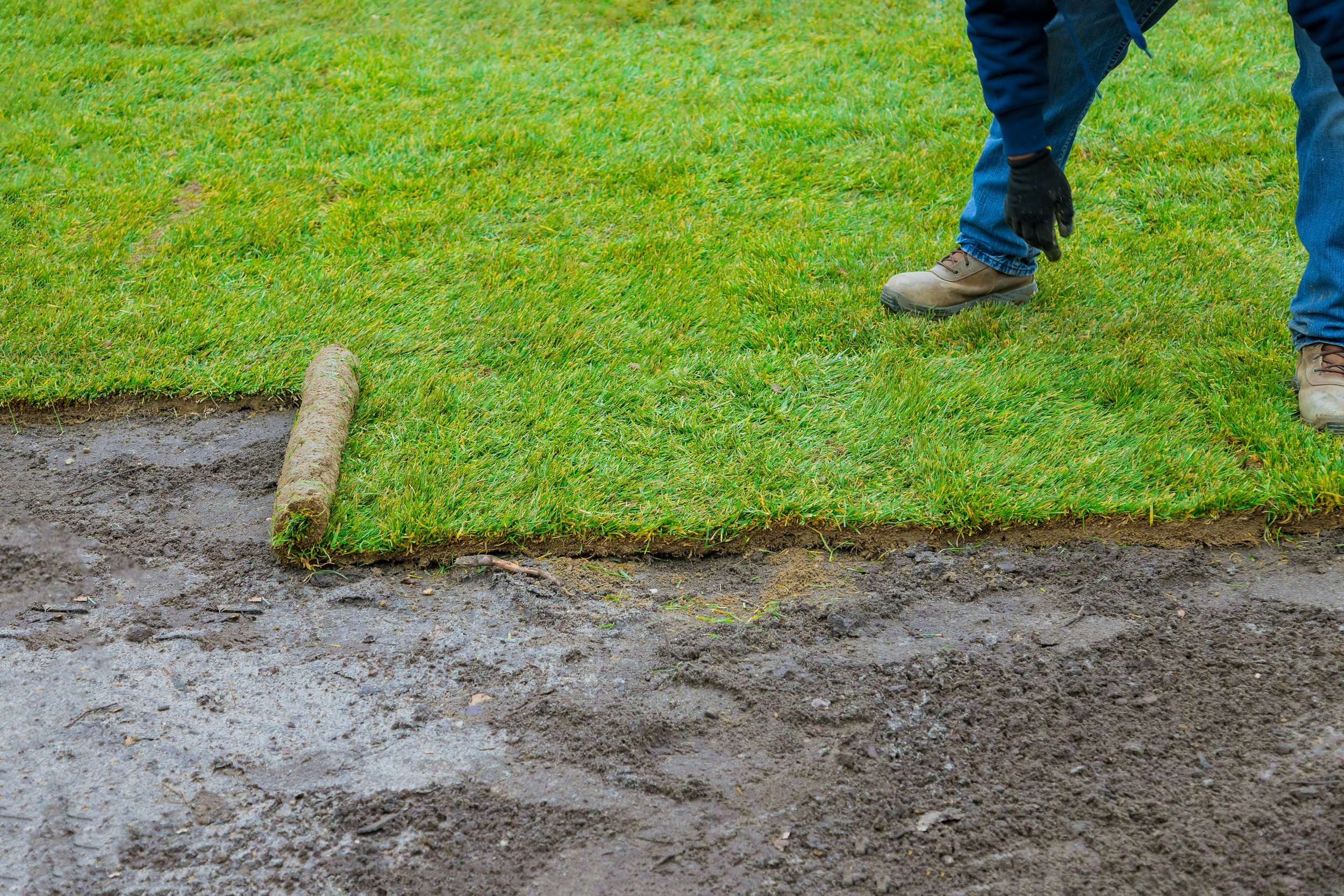15 Low Maintenance Grass Ideas for Effortless Care
Looking for a hassle-free way to keep your lawn lush and vibrant? Check out these 15 low-maintenance grass ideas for effortless care, ensuring a gorgeous yard that doesn’t demand constant attention.
Tired of spending your weekends mowing, watering, and fussing over your yard? You’re not alone. Many homeowners dream of a vibrant, green lawn without the endless chores. After all, our personal spaces should be about relaxation, not back-breaking maintenance. That’s where low-maintenance grass options come into the picture. They’re like a friendly neighbor who’s always got your back, saving you time and effort while still giving you that beautiful patch of green you crave. Think of these grasses as the laid-back cousins of traditional lawns—perfect for folks who want to put their feet up more often. In this guide, we’ll explore 15 turf ideas that fit right into a busy schedule. Ready to discover easy lawn care options that let you say goodbye to complicated yard work? Let’s dive in.
1. Bermuda Grass: The Sun-Loving Powerhouse
Bermuda grass is like that friend who thrives in the spotlight—it absolutely loves full sun. If you live in a warm region where your lawn sizzles under bright rays, Bermuda grass might be your go-to choice. It’s known for its sturdy nature and quick growth, which can easily outcompete pesky weeds. Think of it as the overachiever of the turf world, always ready to bounce back from foot traffic or slight neglect. Although it’s relatively low-maintenance, keep in mind that Bermuda grass appreciates some watering during extended dry spells. Also, it grows best when you give it a moderate mowing schedule to keep it looking neat and clean. If you’re looking for a vibrant, green carpet that confidently basks in the sun, Bermuda grass truly rises to the occasion.
2. Zoysia Grass: The Slow-Growing Marvel
Zoysia grass is often compared to a slow-cooker meal—set it up, give it time, and it rewards you with remarkable results. Its leisurely growth rate translates into fewer mowing sessions, letting you reclaim your weekends for relaxation or fun family activities. This hardy turf tolerates both heat and moderate cold, making it a versatile choice for transition zones. It also has a thick, dense growth habit that naturally discourages weeds from taking over. While it does appreciate a little fertilizer boost once or twice a year, it’s by no means demanding. Zoysia is like a zen master in your yard, calmly growing at a measured pace and remaining resilient even in challenging climates. In essence, it’s the perfect companion for those seeking a chill, low-maintenance lawn.
3. Fescue Grass: The Shade-Tolerant Contender
Fescue grass is every shady corner’s best friend. If your yard has large trees or tall fences that block out direct sunlight, fescue steps up to the plate. There’s a reason many homeowners incorporate fescue mixes into their lawns: it doesn’t mind a bit of darkness. In fact, it thrives in cooler weather, making it an outstanding choice for temperate regions. Think of it as the undercover agent of the grass world—quiet, resourceful, and successful in places other turf varieties might wither. Fescue typically requires moderate watering, but once it’s established, it can handle short dry spells. While it might need a little more help with weed control in early stages, once fully grown, fescue repays your efforts with a plush, shaded haven.
4. Buffalo Grass: The Drought-Tolerant Wonder
Buffalo grass stands out as the ultimate desert dweller among turf varieties. Native to North America’s Great Plains, it’s accustomed to scorching summers and unpredictable rainfall. If you’ve ever complained about a water-hog lawn, you’ll love buffalo grass. It’s like a camel for your yard—it stores resources and can handle prolonged periods with minimal water. When temperatures drop or moisture is scarce, buffalo grass cleverly goes dormant, patiently waiting for better conditions. To keep it tidy, you’ll only need to mow a handful of times during the growing season. A bit of fertilizer can help it maintain a brighter hue, but it’s far from needy. Embrace buffalo grass if you want a rugged, eco-friendly option that laughs in the face of drought.
5. Centipede Grass: The “Lazy Man’s Grass”
Centipede grass has earned its nickname, the “lazy man’s grass,” and for good reason. It sprouts slowly and creeps across the lawn, forming a pleasant, low-growing mat. Unlike some grasses that demand attention, this variety is all about minimal upkeep. Think of it as the homebody who’s content with just the basics—moderate sunlight, enough moisture, and a decent soil pH range. It doesn’t clamor for frequent fertilization, which keeps your to-do list shorter. One caveat: centipede grass has less tolerance for heavy foot traffic, so if you host summer barbecues every weekend, you might want to give it a little extra TLC. But for those who don’t want to wrestle with incessant yard chores, centipede grass is a calm, breezy choice that excels in laid-back landscapes.
6. St. Augustine Grass: The Broad-Bladed Beauty
If you’re looking for a grass variety that oozes a lush, tropical vibe, St. Augustine grass could be your dream come true. With broad, emerald blades, it gives off a distinctly coastal feel, as if you’ve brought a slice of the beach right to your doorstep. One of its biggest selling points is its ability to thrive in warmer climates while handling moderate shade. Sure, it’s not the most drought-tolerant option, but it makes up for that in adaptability and luxurious texture. Imagine walking barefoot on a soft, beach-like surface—St. Augustine provides that comfy sensation. Regular but moderate watering is key, along with a touch of fertilizer to maintain its vibrant color. If you crave a lush look and can provide warm conditions, this grass is all yours.
7. Tall Fescue: The Cool-Season Resilient
Tall fescue is like the dependable friend who’s always ready to lend a helping hand. Being a cool-season grass, it shines in regions with milder summers and cold winters. One of the coolest things about tall fescue is its impressive root system, which reaches deep into the soil to find nutrients and moisture. This resilience means it can bounce back from brief droughts or foot traffic more easily than some fussier varieties. If you notice thin spots, you can sprinkle seeds for overseeding, which helps maintain a uniform, thick lawn. Aim to keep your mowing height a bit taller—this helps the grass retain moisture and block out weeds. When nurtured properly, tall fescue develops into a robust, green carpet that can withstand life’s little bumps.
8. Fine Fescue: The Delicate-Looking Gem
Fine fescue might appear dainty with its slender blades, but don’t let that fool you—this grass is as tough as it is beautiful. Often blended with other cool-season varieties, fine fescue brings excellent shade tolerance and a refined texture to the lawn party. It’s the graceful ballet dancer in a world of sumo wrestlers, relying on its adaptability rather than brute force to thrive. Fine fescue typically has low fertilizer requirements, and once established, it won’t demand frequent watering, especially in cooler climates. If your yard features towering trees and partial sunlight, fine fescue is an excellent choice. It forms a soft, inviting turf that begs for barefoot strolls on summer afternoons. With minimal fuss, this grass will continue to enchant you all season long.
9. Ryegrass Mixes: Quick to Germinate
Ryegrass is a reliable quick-fix solution, making it a go-to for overseeding or rapid lawn rejuvenation. Consider it the paramedic of the grass world—rushing in to patch bare spots before they become an eyesore. Known for its speedy germination, ryegrass helps to stabilize soil and prevent erosion, especially on slopes or newly graded yards. While ryegrass can be grown as a standalone lawn, many homeowners mix it with other varieties for year-round coverage. Just be aware that ryegrass can be somewhat thirsty, especially in warmer climates, so consistent watering is crucial for best results. With proper care and a little patience, ryegrass can blend seamlessly with existing turf, providing a lush, cohesive lawn that bounces back from everyday wear and tear.
10. Synthetic Turf: The Zero-Mow Lawn
Artificial grass used to have a bad reputation for looking plastic and feeling stiff. But times have changed, and so have the materials. Today’s synthetic turf is surprisingly soft, visually appealing, and a total game-changer for anyone seeking an ultra-low-maintenance yard. Think of it as the “set it and forget it” approach to lawn care—you won’t have to mow, water, or weed. Simply brush away leaves and debris, and rinse if necessary. The biggest downside? An upfront investment that can be pricey. But if you calculate the long-term savings on water bills, fertilizers, and time spent under the hot sun, synthetic turf starts to look pretty attractive. It’s like getting a perfect haircut that never grows out—always pristine, always ready for guests.
11. Mixed Eco-Lawns: Embracing Diversity
A mixed eco-lawn is the buffet of turf options. By blending different grass varieties with clover or other low-growing plants, you cultivate a yard that’s more resilient and visually interesting. Imagine weaving together a tapestry of greens that can adapt to changing conditions, whether that’s shifting sunlight patterns or variable rainfall. Each plant has its own superpower—some fix nitrogen in the soil, others offer shade tolerance, and still others ward off pests. It’s like assembling a superhero squad for your lawn, ensuring that no single threat can wipe it out. Maintenance often involves fewer chemical inputs because these blends are naturally competitive against weeds and pests. Plus, the resulting biodiversity can attract beneficial insects, giving your lawn a soft hum of life that’s as eco-friendly as it is charming.
12. No-Mow Grasses: Embracing a Natural Look
Ever dream of a meadow-like yard that looks like it stepped out of a fairytale? No-mow grasses might be your ticket. These grasses, often fescue-based, grow slowly and never reach the towering heights of traditional lawn varieties. Picture gentle, rolling waves of green that you only trim once or twice a season—if at all. It’s an ideal choice for anyone seeking a more natural aesthetic, a place where wildflowers can dance and beneficial insects can frolic. Maintenance becomes almost nonexistent, though you’ll want to keep an eye on invasive weeds sneaking in. It’s like wearing your favorite pair of comfy sweatpants instead of business attire—relaxed, breezy, and oh-so-appealing. If you’re ready to ditch the weekly mow in favor of a simpler vibe, consider no-mow grasses.
13. Ornamental Grasses: Adding Texture
Who says a lawn has to be uniform? Ornamental grasses toss out the rulebook by providing texture, height, and interesting seed heads. From the feathery plumes of pampas grass to the striking arch of fountain grass, these varieties can add an artistic flourish to your landscaping. Imagine walking through your yard and hearing the soft rustle of tall grass in the breeze—it’s like a built-in wind chime. While many ornamental grasses don’t need frequent watering once established, they do appreciate occasional trimming or dividing to stay in top form. Plant them in clusters or as accent pieces around pathways or flower beds. They’re nature’s sculpture garden, offering a visual break from traditional turf while still remaining relatively hands-off compared to finicky flower beds.
14. Wildflower Grass Blends: A Colorful Alternative
A wildflower grass blend is your personal invitation to a butterfly and bee parade. Rather than a strictly green lawn, you’ll enjoy pops of color throughout the growing season. Think daisies, poppies, or coneflowers mingling with low-maintenance grasses. This approach transforms your yard into a dynamic tapestry that’s equally pleasing to the eye and beneficial to the local ecosystem. It’s like turning your lawn into a living painting—constantly evolving with each bloom. Maintenance mostly involves occasional trimming to keep things looking intentional, plus some spot weeding. You might also consider seeding fresh wildflowers annually to sustain the display. While this option isn’t for everyone, it’s a fantastic pick for those who love the idea of a yard that’s alive with bees, butterflies, and pollinators galore.
15. Clover Lawns: The Eco-Friendly Companion
Clover lawns are like having a quiet, green superhero underfoot. White clover, in particular, partners with soil bacteria to fix atmospheric nitrogen, essentially creating its own fertilizer. This self-sufficiency means you can cut back on store-bought fertilizers. Clover also has soft, rounded leaves and lovely white or pink blossoms that attract pollinators. Imagine a yard sprinkled with delicate flowers that feel incredibly gentle beneath your feet. If your lawn sees moderate foot traffic, no worries—clover can handle it. Plus, it’s more drought-tolerant than many traditional turf grasses, which keeps your water bills in check. While you may have to deal with occasional bees hovering around the blooms, many homeowners see this as an eco-friendly bonus. If you want a fresh take on a lush lawn, clover lawns might be your new best friend.
Conclusion
Low-maintenance grasses are a fantastic way to keep your outdoor space looking its best without sacrificing your free time. By choosing varieties that align with your local climate and your lawn’s specific quirks—like shade levels, soil type, or foot traffic—you’ll set yourself up for success from day one. Whether you’re drawn to the easygoing nature of centipede grass, the eco-friendly perks of clover, or the sturdy resilience of tall fescue, there’s an effortless option perfect for you. So go ahead and reclaim your weekends, reduce your workload, and still enjoy a lush, green sanctuary right outside your door.
Read next: How to Plant Grass Seed on Hard Dirt: A Step-by-Step Guide
Frequently Asked Questions
Is synthetic turf safe for pets?
Absolutely. Modern synthetic turfs are designed with pet safety in mind, featuring non-toxic materials that are easy to clean. Just remember to rinse and remove pet waste regularly, and you’ll have a worry-free lawn.Will a clover lawn attract too many bees?
Clover lawns can attract bees when in bloom, but that’s often seen as a plus for pollinator health. If you’re concerned, you can mow before flowers fully open to reduce bee activity.How often do I need to water buffalo grass?
Once established, buffalo grass is quite drought-tolerant. You typically only need to water deeply every few weeks during hot, dry spells, making it a perfect choice for water-conscious homeowners.Can ornamental grasses survive winter climates?
Many ornamental grasses are surprisingly hardy and can handle cold conditions. Some even retain visual interest through winter, offering graceful plumes and textures when most other plants have gone dormant.What if I want a mix of wildflowers and regular turf grass?
Blending wildflowers with a low-maintenance turf is totally doable. The key is to select compatible grass varieties and plan your mowing schedule around the wildflower blooming cycle, allowing them time to flourish.
